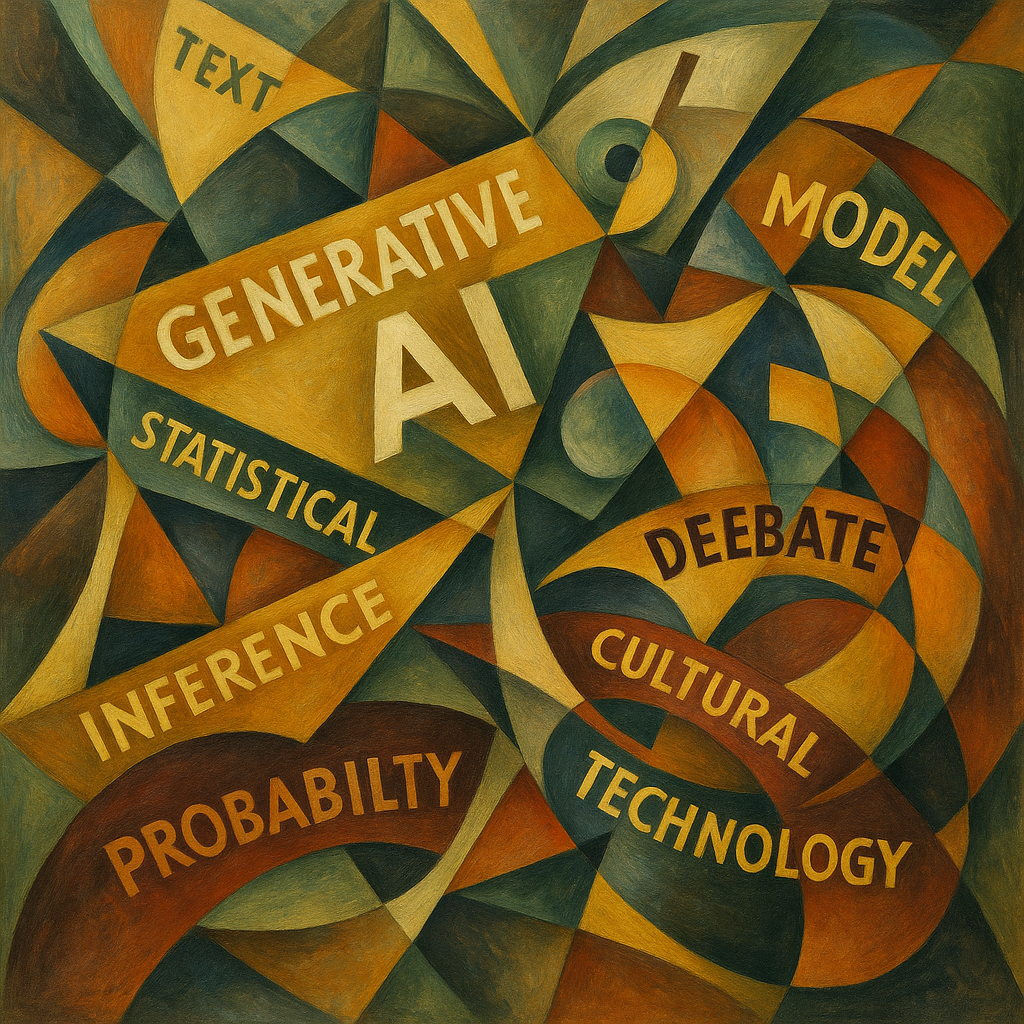Course Announcement: "Statistical Principles of Generative AI" (Fall 2025)
Attention conservation notice: Notice of a fairly advanced course in a discipline you don't study at a university you don't attend. Combines a trendy subject matter near the peak of its hype cycle with a stodgy, even resentful, focus on old ideas.
This fall will be the beginning of my 21st year at CMU. I should know better than to volunteer to do a new prep --- but I don't.
- Special Topics in Statistics: Statistical Principles of Generative AI (36-473/36-673)
- Description: Generative artificial intelligence systems are
fundamentally statistical models of text and images. The systems are
very new, but they rely on well-established ideas about modeling and
inference, some of them more than a century old. This course will
introduce students to the statistical underpinnings of large language
models and image generation models, emphasizing high-level principles
over implementation details. It will also examine controversies about
generative AI, especially the "artificial general intelligence" versus
"cultural technology" debate, in light of those statistical
foundations.
- Audience: Advanced undergraduates in statistics and closely related majors; MS students in statistics.
- Pre-requisites: 36-402 for undergraduates taking 36-473. For MS students taking 36-473, preparation equivalent to 36-402 and all its pre-req courses in statistics and mathematics. A course in stochastic processes, such as 36-410, is helpful but not required.
- Expectations: All students can expect to do math, a lot of reading (not just skimming of AI-generated summaries) and writing, and do some small, desktop-or-laptop-scale programming exercises. Graduate students taking 36-673 will do small-group projects in the second half of the semester, which will require more elaborate programming and data analysis (and, probably, the use of departmental / university computing resources).
- Time and place: Tuesdays and Thursdays, 2:00--3:20 pm, Baker Hall A36
- Topical outline (tentative): Data compression and generative modeling; probability, likelihood, perplexity, and information. Large language models are high-order parametric Markov models fit by maximum likelihood. First-order Markov models and their dynamics. Estimating parametric Markov models by maximum likelihood and its asymptotics. Influence functions for Markov model estimation. Back-propagation for automatic differentiation. Stochastic gradient descent and other forms of stochastic approximation. Estimation and dynamics for higher-order Markov models. Variable-length Markov chains and order selection; parametric higher-order Markov chains. Prompting as conditioning. Influence functions and source attribution. Transformers; embedding discrete symbols into continuous vector spaces. Identification issues with embeddings; symmetries and optimization. "Attention", a.k.a. kernel smoothing. State-space modeling. Generative diffusion models. Diffusion as a stochastic (Markov) process; a small amount of stochastic calculus. Learning to undo diffusion. Mixture models. Generative diffusion models vs. kernel density estimation. Information-theoretic methods for diffusion density estimation. Combining models of text and images. Prompting as conditioning, again. Conformal prediction.
- Audience: Advanced undergraduates in statistics and closely related majors; MS students in statistics.
All of this, especially the topical outline, is subject to revision as we get closer to the semester actually starting.
Manual trackback: Brad DeLong.

ChatGPT's interpretation of the course description, as a painting in the style of the Futurist Gino Severini. The fact that it managed to spell "statistical inference", but not "debate", is a nice touch
Posted at April 22, 2025 12:55 | permanent link